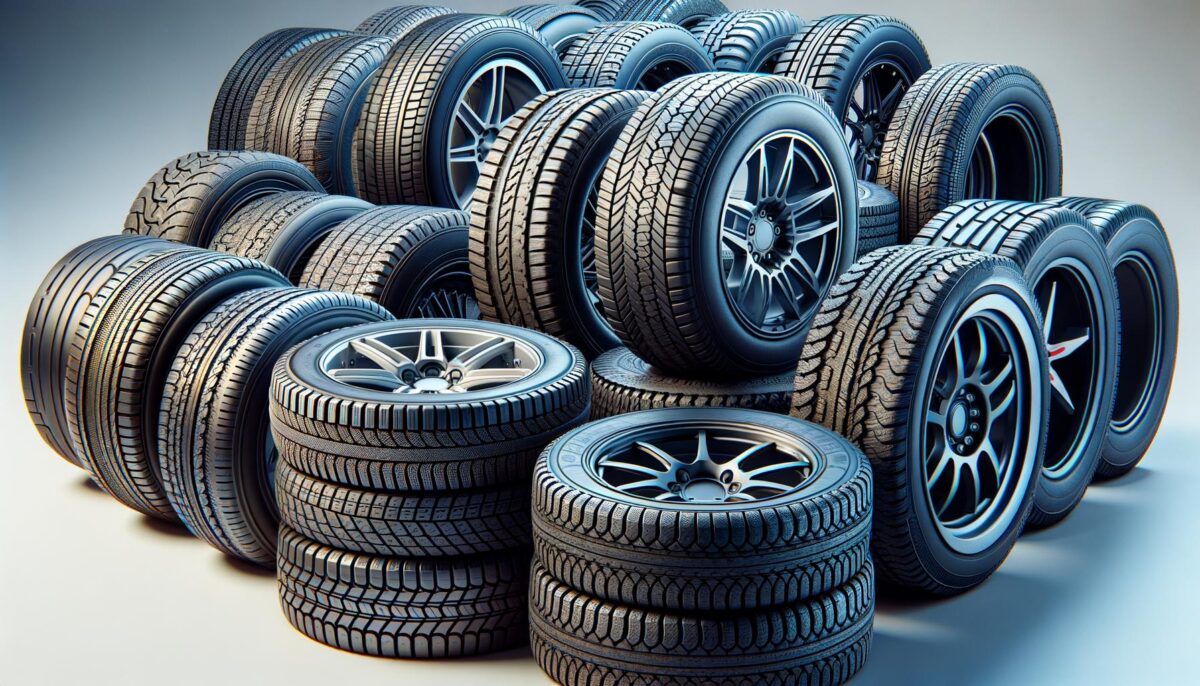The Importance of Choosing the Right Tires
When it comes to ensuring a vehicle’s safety and performance, selecting the right tires is paramount. Tires are the only point of contact between your vehicle and the road, meaning their quality and condition significantly influence your driving experience. The right tires can enhance your vehicle’s traction, handling, and fuel efficiency. But with a wide assortment of tires available in the market, how do you make the right choice?
Factors such as climate, road conditions, and driving habits should guide your decision. For instance, in regions that experience heavy snowfall, winter tires with specialized tread patterns are ideal for providing additional grip. In contrast, all-season tires are suitable for areas with moderate weather conditions. High-performance tires are designed for drivers who prioritize speed and handling, offering increased responsiveness and superior traction even at high speeds.
The Science Behind Tire Tread Patterns
Understanding tire tread patterns can illuminate their role in performance and safety. The tread pattern plays a crucial role in maintaining traction, especially in adverse weather conditions. Treads are specifically designed to channel water away from the tire, reducing the risk of hydroplaning.
There are several types of tread patterns to be aware of:
- Symmetrical Treads: These are common in standard cars and provide an even distribution of weight and wear.
- Asymmetrical Treads: They cater to different driving needs and offer optimal handling for various conditions, like dry or wet roads.
- Directional Treads: Designed to rotate in one direction only, they enhance high-speed stability and better water displacement.
Choosing the correct tread pattern can have a significant effect on your vehicle’s handling and your overall driving safety.
How to Extend the Life of Your Tires
Maintaining your tires not only extends their lifespan but also optimizes their performance. Regular maintenance routines can prevent premature wear and save you money in the long run. Here are a few tips to keep your tires in peak condition:
- Regularly Check Tire Pressure: Under or over-inflated tires can lead to uneven wear. Make it a habit to check tire pressure monthly.
- Schedule Wheel Alignments: Incorrect alignment can cause tires to wear unevenly, affecting handling.
- Rotate Your Tires: Regular rotation helps even out tire wear, promoting balanced handling.
Simple checks and maintenance can significantly contribute to the longevity and performance of your tires, which directly impacts your driving experience and safety.
Decoding Tire Sidewall Markings
Have you ever looked at the sidewall of your tire and wondered what those numbers and letters mean? Although they might seem technical, understanding these markings can provide valuable information about your tires.
The markings on a tire’s sidewall typically include:
- Tire Width: The first three digits represent the tire’s width in millimeters.
- Aspect Ratio: This reflects the height of the tire’s cross-section in relation to its width.
- Diameter: This is the diameter of the wheel in inches that the tire is designed to fit.
- Load Index and Speed Rating: These numbers and letters indicate the maximum load the tire can carry and its maximum speed capability.
Decoding these details can ensure that you select the correct tires for your vehicle, enhancing both safety and performance.
Future Trends in Tire Technology
The tire industry continually evolves with advancing technology, promising safer and more efficient driving experiences. One of the significant trends in tire technology is the development of smart tires. These feature embedded sensors that monitor tire pressure, temperature, and tread wear in real time.
Another innovation is the pursuit of sustainable materials. Manufacturers are exploring renewable materials like dandelion rubber and silica from rice husks to reduce the environmental impact. Additionally, airless tires are being developed, offering benefits like no air leaks, longer lifespan, and reduced maintenance.
These advancements in tire technology are bound to revolutionize the automotive industry, providing solutions that enhance safety, efficiency, and sustainability.
Conclusion: Making Informed Tire Choices
Tires play a pivotal role in vehicle safety and performance, and making informed choices when purchasing or maintaining them is crucial. By understanding the importance of tire selection, the role of tread patterns, maintenance tips, sidewall markings, and future technology trends, drivers can ensure that their tires provide the best possible performance.
Investing time in understanding tires can lead to improved safety, better handling, and increased fuel efficiency. As technology continues to advance, staying informed about new developments will ensure that drivers can make the most of these innovations while supporting a sustainable future.
